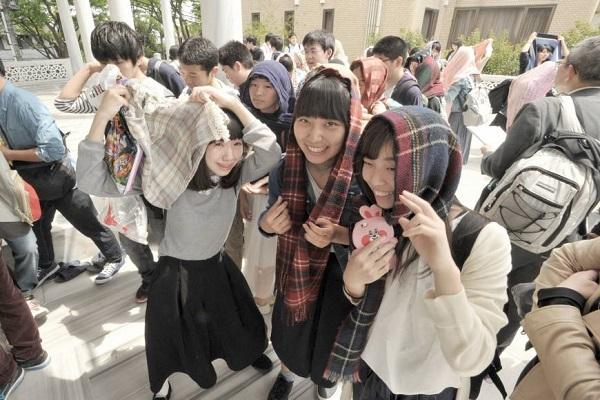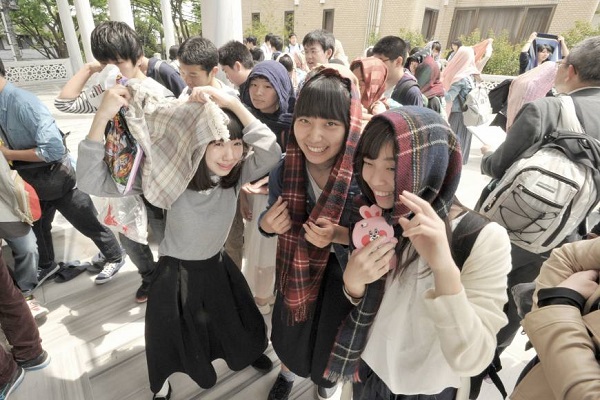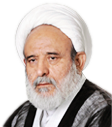
A recent wave of terror has fueled anti-Muslim hostility worldwide, fostering a negative image of Islam — a faith still unfamiliar in Japan.

But Japan’s youth have been seeking answers to questions including what Islam really teaches and why it is blamed for violence.
Many schools have introduced visits to Tokyo’s largest mosque in the belief that the cultural experience will provide students with a tangible, unbiased grasp of Islam. The visits already have proved effective.
Shunya Senaga, 17, called the opportunity to watch Muslims pray a “precious experience,” adding it made him understand how important Allah is to their culture.
Senaga said he knows one Muslim, but only on a greeting basis.
“That person is so accustomed to Japanese culture that I didn’t think of differences between us,” he said.
Although basic knowledge of Islam is part of the school’s curriculum, he said, news reports concerning issues involving the Daesh (ISIL) terrorist group and the impact it’s had “make us perceive Islamic culture negatively.”
Senaga was one of 360 students from public Omiya Kita High School in Omiya, Saitama Prefecture, who in late April visited Japan’s largest mosque — the Tokyo Camii & Turkish Culture Center in Shibuya Ward.
“All the news about Daesh jumps into your subconscious, but apparently Muslims are really good people. Only some are acting against their values,” said Senaga’s 16-year-old classmate Naoto Takaku.
The visit to the mosque came ahead of a trip this fall to Singapore and Malaysia, where they plan to spend a day observing Muslim families in rural Malaysia.
“In a place like this they can get a glimpse into the Islamic world and see what kind of religion Islam is,” teacher Akiko Kobayashi, who will be in charge of the trip, told The Japan Times.
“I want students to see how people in Islamic communities co-exist, support each other, and show them their everyday life to help them understand it’s a religion advocating for peace,” she said. “I want them to get rid of biases.”
For nearly all of the students it was their first close encounter with Islam.
Before stepping into the mosque, some were hastily taking off their shoes, while female students, with apparent excitement on their faces, took snapshots with their heads covered.
“I believe school education is one of the best ways Japanese can get more familiar with Islam … and all teachers who bring their students here are more than welcome,” the mosque’s spokesman, Shigeru Shimoyama, said.
Shimoyama, a Muslim convert who served as their guide that day, believes young people need more exposure to religion at an early age so they can deepen their understanding about religious facts.
He invites students to learn about the religion’s values, including that in the eyes of Allah, all people are equal, and about the achievements of Islamic civilizations, still present in daily life, that have been overshadowed by media reports on terrorist acts carried out by radicals.
Shimoyama said that in the past, Tokyo Camii only drew attention from elderly people or fine arts students who would come with sketchbooks to study the mosque’s architecture.
But in the past few years, the number of visitors from junior high and high schools has risen significantly, he said.
The second-year students from Omiya Kita High School represented the largest non-Muslim youth group to enter the mosque to date.
“I am happy when young people learn something new here, something they can’t find in textbooks,” Shimoyama said.
During the lecture, Shimoyama spoke about how Japan’s Islamic community has grown since the construction of Tokyo Camii, which in its initial form in the 1930s served as an educational and social service center for Tartar immigrants who fled the 1917 Russian Revolution. Later demolished and reconstructed, it was completed in its current form in 2000.
Shimoyama added that of the roughly 100,000 Muslims living in Japan, about 10,000 are Japanese.
Several adherents arrived to offer prayers. Students raised their heads when a group of Muslims started chanting loudly and, encouraged by Shimoyama, moved closer to observe the ritual.
The fact that prayer is the central element of Islam and Muslims must roll out their prayer rugs five times a day made an impression on the young listeners.
English teacher Tomoko Taga, who accompanied the students, hopes the trip to Southeast Asia will become a chance for them to learn about economic development in other countries, a lesson that may serve them well in their careers.
“I want them to see how life in a culturally different environment looks,” she said. “…I hope they can benefit from this experience in the future.”
Shimoyama believes this kind of knowledge is indispensable because the Muslim population is projected to grow and eventually exceed the population of Christians, noting the spread of Islam is already noticeable, even in Japan.
“Of all religions practiced worldwide, only Christianity and Islam have become the world’s largest, but Islam, with world’s second-largest population of 1.6 billion adherents, remains unknown in Japan,” he said.
“Many Japanese insurers are now tapping markets in countries like Indonesia,” where over 90 percent of the population is Muslim, Shimoyama said, adding that Indonesians also constitute the largest Muslim group among visitors to and residents of Japan.
But following gruesome incidents last year, including the execution of Japanese freelance journalist Kenji Goto in Syria and the deadly coordinated attacks in Paris, the Islamophobic attacks on Muslim communities did not spare Tokyo Camii.
“You Muslims get out of here,” Shimoyama recalled one caller telling the mosque over the phone. “But I try to respond and listen to their claims.”
Shimoyama blames the media for evoking a negative perception of Islam, especially among those unfamiliar with the religion.
What drove Shimoyama to convert was the hospitality he found in Muslims he met when traveling.
When Japan-born Shimoyama visited Africa in his university years, he had not heard much about Muslims before. But their hospitality sparked his interest in Islam’s teachings, from which he believed their kindness sprang.
Since his return he has been advocating for Japan’s Islamic community and working to raise awareness and remove misconceptions of the faith caused by radical extremists.
According to Shimoyama, unlike those abroad who feel threatened by the growing presence of Muslims in their countries, today’s Japanese show greater interest and don’t tend to express anti-Muslim sentiment.
source : Shafaqna













